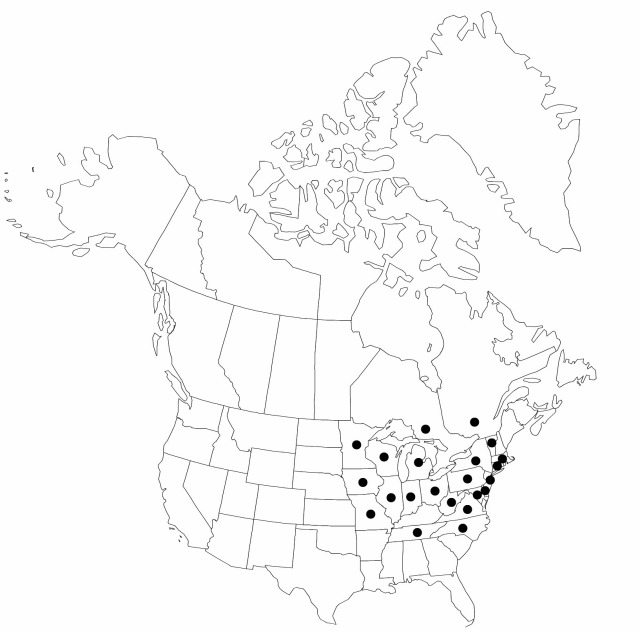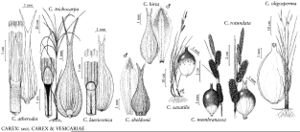Difference between revisions of "Carex trichocarpa"
Sp. Pl. 4(1): 302. 1805.
FNA>Volume Importer |
imported>Volume Importer |
||
| (2 intermediate revisions by 2 users not shown) | |||
| Line 8: | Line 8: | ||
}} | }} | ||
|common_names=Carex à fruits velus | |common_names=Carex à fruits velus | ||
| + | |special_status={{Treatment/ID/Special_status | ||
| + | |code=F | ||
| + | |label=Illustrated | ||
| + | }}{{Treatment/ID/Special_status | ||
| + | |code=E | ||
| + | |label=Endemic | ||
| + | }} | ||
|basionyms= | |basionyms= | ||
|synonyms= | |synonyms= | ||
| Line 47: | Line 54: | ||
|publication title=Sp. Pl. | |publication title=Sp. Pl. | ||
|publication year=1805 | |publication year=1805 | ||
| − | |special status= | + | |special status=Illustrated;Endemic |
| − | |source xml=https:// | + | |source xml=https://bitbucket.org/aafc-mbb/fna-data-curation/src/2e0870ddd59836b60bcf96646a41e87ea5a5943a/coarse_grained_fna_xml/V23/V23_929.xml |
|genus=Carex | |genus=Carex | ||
|section=Carex sect. Carex | |section=Carex sect. Carex | ||
Latest revision as of 20:44, 5 November 2020
Culms trigonous in cross section, 40–120 cm; vegetative culms hard, solid with parenchyma, taller than fertile culms. Leaves: basal sheaths reddish purple, inner bands fibrillose with age; sheaths with apex of inner band strongly reddish purple tinged, thickened, especially on distal sheaths, thickened portion opaque, smooth, glossy, essentially veinless at apex, not ladder-fibrillose, glabrous; ligules 3–12.5 mm; blades 2.5–8.8 mm wide, glabrous, not papillose abaxially. Inflorescences 13–50(–60) cm; spikes erect or ascending; proximal 2–4(–6) spikes pistillate; terminal 1–8 spikes staminate (rarely gynaecandrous). Pistillate scales lanceolate to narrowly ovate, apex acute to acuminate, scabrous-awned, glabrous. Staminate scales lanceolate to narrowly ovate, apex obtuse to acuminate, occasionally scabrous-awned, glabrous. Perigynia 12–22-veined, (5.3–)6–11.5 × (1.7–)2.1–3.9 mm, sparsely to densely pubescent (very rarely glabrous); beak 2.1–4.4 mm, pubescent, teeth straight to spreading, (1–)1.2–2.3(–2.8) mm.
Phenology: Fruiting May–Jul.
Habitat: Openings in bottomlands, marshes, wet meadows, wet thickets along streams and rivers, wet prairies along streams, rarely occurring far from streams
Elevation: 50–900 m
Distribution

Ont., Que., Conn., Del., Ill., Ind., Iowa, Md., Mass., Mich., Minn., Mo., N.J., N.Y., N.C., Ohio, Pa., Tenn., Vt., Va., W.Va., Wis.
Discussion
Carex trichocarpa is quite uncommon in large portions of its range (E. L. Core 1968).
Carex trichocarpa rarely hybridizes with C. atherodes, C. lacustris (P. M. Catling et al. 1989), and C. pellita (C. ×caesariensis Mackenzie, according to A. A. Reznicek and P. M. Catling 1985). Hybrids of C. trichocarpa with C. laeviconica are uncommon in the zone of overlap of these two species (D. Castaner and A. A. Reznicek 1988); one collection of that hybrid is known from Nebraska, although C. trichocarpa has not yet been recorded from the state (S. Rolfsmeier and B. Wilson 1997). A single collection with glabrous perigynia has been seen.
Selected References
None.
